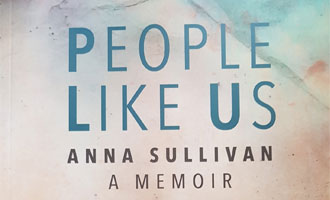148 countries including the European Union have ratified the United Nations Convention on the Rights of Persons with disabilities (UNCRPD) and 158 have adopted the Convention. In December2013 a Report-‘Thematic Study on the Rights of persons with disabilities to education’ from the UN Human Rights Council made clear inclusion and inclusive education is one of the key provisions of the UNCRPD. Article 24 commits State parties to developing an inclusive education system, where disability should not prevent people from successfully participating in the mainstream education system. But this study demonstrates that although there have been moves towards inclusion such as, by the provision of statutory rights to inclusion in Spain and Portugal (joining the long standing practice in Italy), there are still many barriers including lack of adequately trained teachers, accessible buildings, peer support and challenging bullying, with much more integration than inclusion. The observations of the CRPD Committee on the first 13 Country Reports also demonstrate a wide variation in practice, for example China is criticised for only integrating those with physical and mild visual impairments and for an expanding programme of special school building. Austria, which had developed moves to inclusion a decade ago is criticised for lacking continuing momentum in this process. All 13 countries are urged to do more and reminded that the duty of making reasonable accommodations in education for disabled people is not a progressively realised right, but must be implemented from the point of ratification. In March 2014 the Human Rights Council passed a resolution urging more to be done to implement the right to inclusive education . As these Reports point out implementing full inclusive education is a matter of political will and where that consensus has been built as in New Brunswick Province, Canada it can happen. In New Brunswick Policy No 322 on inclusive education states:
“6.2.2 . The following practices must not occur: 1) Segregated, self contained programs or classes for students with learning or behavioural challenges, either in school or in community based learning opportunities. 2) Alternative education programmes for students enrolled in kindergarten to grade eight.”
Send ALL Disabled Children to School????
Around the world we have much to campaign for in terms of developing inclusive education for all disabled learners. The Global Campaign for Education in the UK is focusing on getting the 40% of out-of- school children who are disabled, into school. That is 24million out of 57 million children still out of school. Send All My Friends to School (www.sendmyfriend.org) has a free pack for schools, to work with pupils in KS1, 2 and 3 pupils this term on raising their awareness of this important issue.
In England, we may feel that we are losing the battle in the argument for inclusion. Despite the weakening of the presumption of inclusion in the Children and Families Act (2014), it is still there, with more than 90% of the two million disabled pupils and students attending schools and colleges, in mainstream provision. Domestically the struggle for inclusion must continue.
However, worldwide, despite 14 years of the Millennium Development Goal (2) requiring that all children should complete primary education, this will not be achieved next year. There have been big advances in many countries in getting millions of children into school, but the nature and quality of that schooling has not been adequate with a recent survey of 350,000 pupils in East Africa (Tanzania, Kenya, Uganda) showing only 15% achieved expected literacy and numeracy levels .
When it comes to children with disabilities, as they are known internationally, the numbers in school in most developing countries, though there are no accurate figures, is likely to be less than 10% and numbers completing primary education is less than 1%. So as more children are successfully enrolled in school, the proportion of those out of school who are disabled, are rising. Schools and learning are not generally accessible and teachers do not know how to make reasonable accommodations or provide the right support, so the drop out of enrolled pupils with disabilities is high. There are many reasons. Negative attitudes of parents and teachers are the biggest barrier, followed by poverty-parents need children to work and can’t afford school fees, long distances to school, lack of accessible schools and then lack of adequate teacher training.
In 2012, there were about 28.9 million primary teachers working in classrooms around the world. With universal primary education high on the political agenda, countries have made great efforts to boost the supply of teachers, by 16% globally since 1999 . At least 20 countries have more than doubled their teacher workforces.
Training All Teachers for Inclusive Education
However, as demonstrated by my recent work for UNICEF on preparing teachers for children with disabilities (CWD), most teachers in developing countries get no training on including children with disabilities. If they do get training, it is based on a special education needs model, where the focus is on separating the child from their peers to segregated classes and schools and focussing on what they cannot do from a ‘medical model’. There is an urgent need for all teachers pre-service and in-service, to get twin-track training on including children with disabilities.
Track One: Education based on Principles of Equality and Child Empowerment involves foundations and inclusive values which apply and are beneficial to all groups of marginalized learners and children e.g. girls, nomads, rural, poor, child soldiers/orphans, those with HIV/AIDS, children with disabilities, linguistic and ethnic minorities, traumatised and displaced children. The principles to enable a child friendly educational environment outlined by UNESCO are:
‘Equality and Valuing Difference
Identifying Barriers – Finding Solutions
Collaborative Learning – Peer Support
Differentiation & Flexible Curriculum and Assessment
Stimulating and Interesting Multi-Sensory Learning Environment
An Anti-Bias Curriculum
Child Centred Pedagogy, Creative with Reflective Teachers
Quality education requiring rigour and effort for each child to achieve their potential’ (UNESCO).
Track Two: Education accommodating the different impairment specific needs of children with disabilities or special needs. This will require teachers to be familiar with and able to make accommodations for:
a) Blind and Visually-Impaired pupils /students (Braille, tactile maps and plans, tapes and text to talk, mobility training, large print, magnification, orientation, auditory environment & talking instruments.)
b) Deaf & Hearing-Impaired pupils/students (Sign Language taught & use of interpretation, oral/finger spelling, hearing aid support, visual and acoustic environments.)
c) DeafBlind-Language (Use of interpreters, tactile environment, aids and appliances, orientation.)
d) Physical Impairment (Accessible infrastructure, toilets and washrooms, furniture adjustments, equipment, prosthesis, use of personal assistance, diet, transport, medication.)
e) Speech & Communication impairment (Facilitated communication, augmented communication [high and low tech], social use of language switching, talkers, information grids.)
f) Specific Learning Difficulty (Coloured overlays & background, Easy Read, tapes and text to talk, spell-checkers, concrete objects.)
g) General Cognitive Impairment (Pictograms, small steps curriculum, easy read, scaffolding, Makaton, use of symbols & information grids, using concrete objects.)
h) Mental Health and Behaviour (Counselling and personal support, differentiated behaviour policy, empathy, quiet chill-out space, circles of friends, collaborative learning and structured day.)
i) Introduction to screening, identification and key adjustments for main impairments.
UNESCO Bangkok have produced a very useful online guide on how to go about implementing track two in mainstream schools.
This said, there are many examples of teachers developing the above expertise and including children with disabilities successfully. They are the exception rather than the rule and nowhere have come to scale.
Adolf is visually impaired and can be accommodated in his class in Tanzania due to Sightsavers providing a telescopic sight so he can read the blackboard. After several false starts, Tanzania is now working towards a more system wide approach to inclusion of CWD. Action on Disability and Development International (ADD), have taken on overall responsibility for design, fundraising, implementation, coordination, monitoring, evaluation and dissemination with the MOEVT. Modelling Inclusive Education (MIE) project expects to cover three districts in Coast region with 265 primary schools. These are demonstrating how CWD can be fully included, teachers trained and curriculum adapted so they get quality education. Now the task is to make sure this approach gets into the Post-Millennium Development Goals in 2015.
The prospects for the coming period could change the few examples of inclusive practice into the norm, but there are two obstacles. Firstly, that as the pressure to marketize education increases and more businesses view education services as a means of profit, rather than a public good then those who are seen as difficult or different from the norm will become an inconvenient truth and as the currency of the market becomes standardised test scores those who achieve differently or at a different pace will be squeezed out and old models of segregation will re-assert themselves. Secondly, as the world moves closer to all children being in school the decreasing minority still out of school will not be funded. Against this is the agreement that in what replaces the Millennium Development Goals disability should be specifically mentioned. The Office of the High Commissioner on Human Rights have issued guidance to countries that they must consider disabled children when reporting on progress in establishing human rights . UNICEF have prioritised disabled children and are holding the first global meeting of disabled children and young people in New York in June. This follows the publication of a series of useful publication . ‘Take us Seriously’, being about gathering children with disabilities views and the Global Report on Children last year focused on disability . So it is now about mounting sufficient political pressure to turn fine words into reality.
Notes
1. http://www.ohchr.org/EN/HRBodies/HRC/RegularSessions/Session25/Documents/A-HRC-25-29_en.doc
2. http://tbinternet.ohchr.org/_layouts/treatybodyexternal/TBSearch.aspx?Lang=en&TreatyID=4&DocTypeID=5
3. http://ap.ohchr.org/documents/dpage_e.aspx?si=A/HRC/25/L.30 25th March 2014
Global Monitoring Report 2013/14 UNESCO
4. http://www.app.collinsindicate.com/uis-atlas-teachers/en-us
5. http://worldofinclusion.com/unicef-project-educating-teachers-for-children-with-disabilities/
UNESCO (2009). Policy Guidelines on Inclusion in Education. Paris: UNESCO. http://unesdoc.unesco.org/images/0017/001778/177849e.pdf
6.http://worldofinclusion.com/unicef-project-educating-teachers-for-children-with-disabilities/
7. UNESCO (2009). Policy Guidelines on Inclusion in Education. Paris: UNESCO. http://unesdoc.unesco.org/images/0017/001778/177849e.pdf
8. UNESCO Bangkok (2009). Teaching Children with Disabilities in Inclusive Settings. Specialized Booklet 3. Part of Embracing Diversity: Toolkit for creating inclusive , learning-friendly environments. Bangkok: UNESCO.
9. http://www2.unescobkk.org/elib/publications/243_244/Teaching_children.pdf
10. UN OHCHR (2013) Thematic study on the right of persons with disabilities to education Report of the Office of the United Nations High Commissioner for Human Rights A/HRC/25/29 http://www.ohchr.org/EN/HRBodies/HRC/RegularSessions/Session25/Pages/ListReports.aspx
11. Global Partnership for Children with Disabilities http://www.unicef.org/disabilities/index_69776.html
12. http://www.unicef.org/disabilities/files/Take_Us_Seriously.pdf
13. http://www.unicef.org/sowc2013/files/SWCR2013_ENG_Lo_res_24_Apr_2013.pdf
Category: Blog, Uncategorized


